Conservation Challenges in Crystal River: How Students Make a Difference
- Caleb Mullenix
- Oct 27
- 5 min read
Crystal River stands as one of Florida's most critical marine ecosystems, serving as a vital sanctuary for the endangered West Indian manatee and supporting over 70 natural springs that form the largest spring complex in the state. This unique ecosystem faces unprecedented environmental pressures that threaten its delicate balance, making student involvement in conservation efforts not just beneficial but essential for its survival.
Understanding the scope of conservation challenges and how young scientists can contribute meaningfully to restoration efforts provides educators with powerful opportunities to engage students in real-world environmental science and stewardship.
Understanding Crystal River's Critical Role in Marine Conservation
Crystal River's spring-fed waters maintain a consistent temperature of 72°F year-round, creating an essential warm-water refuge for manatees during Florida's cooler months. Between November and March, over 600 manatees migrate to these protected waters, representing approximately 15% of Florida's total manatee population.
The ecosystem encompasses Kings Bay and connects to the Gulf of Mexico through a network of channels that support diverse marine life including dolphins, sea turtles, and over 90 species of fish. The springs discharge approximately 600 million gallons of freshwater daily, creating unique brackish conditions that support specialized plant and animal communities found nowhere else in the world.
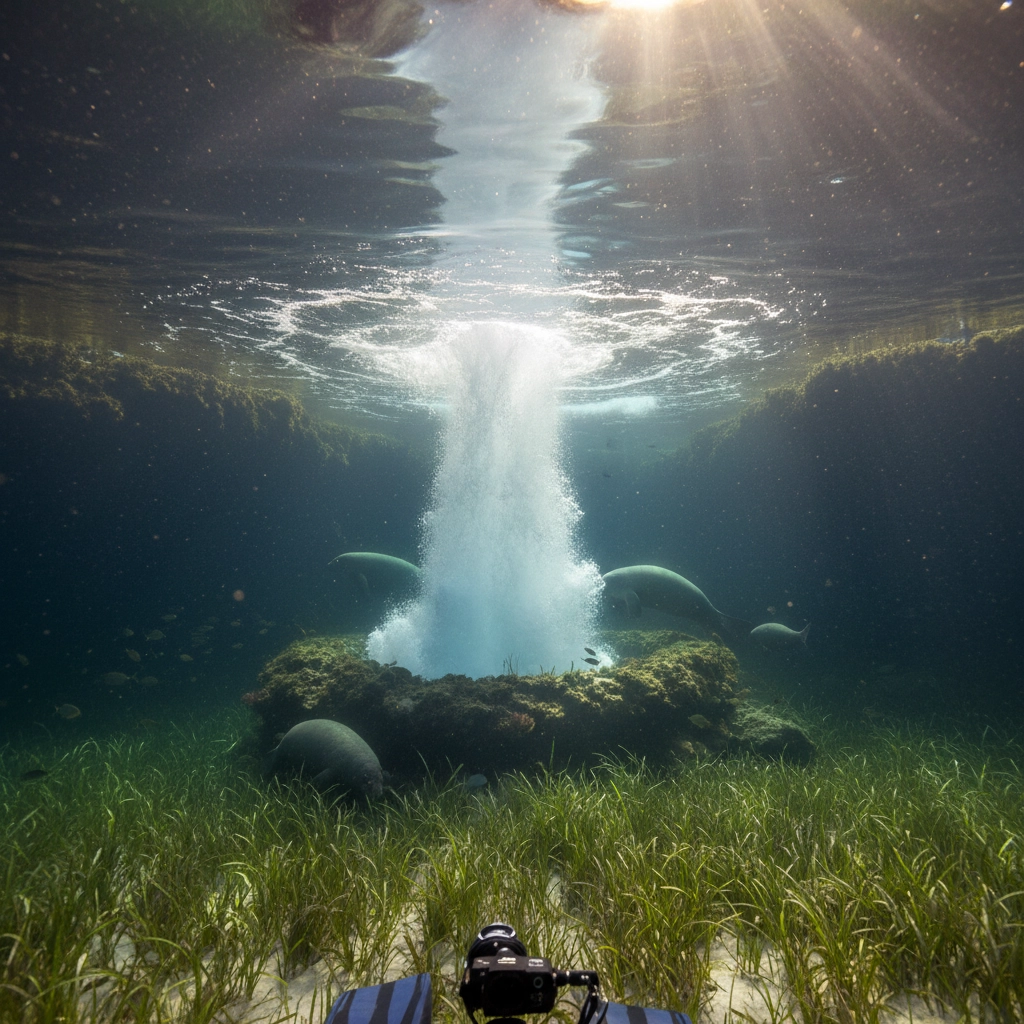
Primary Conservation Challenges Threatening the Ecosystem
Water Quality Degradation and Nutrient Pollution
Nitrogen and phosphorus contamination from agricultural runoff and urban development represents the most significant threat to Crystal River's health. Elevated nitrate concentrations above historical levels have triggered cascading ecological problems throughout the system.
Excessive nutrient loading has led to:
Proliferation of invasive algae species, particularly Lyngbya and Chaetomorpha
Oxygen depletion in critical habitats
Reduction in water clarity essential for seagrass photosynthesis
Disruption of natural food chains supporting marine life
Habitat Loss and Physical Alterations
Between 1950 and 1980, extensive physical modifications fundamentally altered Crystal River's natural hydrology. Dredged canals, seawalls, and waterfront development eliminated approximately 80% of natural shoreline and adjacent wetlands.
These modifications have resulted in:
Altered water circulation patterns affecting spring flow
Increased erosion along artificial shorelines
Loss of critical nursery habitats for marine species
Changes in salinity distribution affecting plant communities
Invasive Species and Seagrass Decline
Thick mats of invasive Lyngbya algae have historically blocked sunlight from reaching native seagrass beds, causing widespread meadow die-offs. Seagrass coverage has declined by over 60% since the 1980s, eliminating critical habitat that provides:
Oxygen production essential for marine life
Shelter and feeding areas for manatees and fish
Natural water filtration and sediment stabilization
Carbon sequestration supporting climate regulation
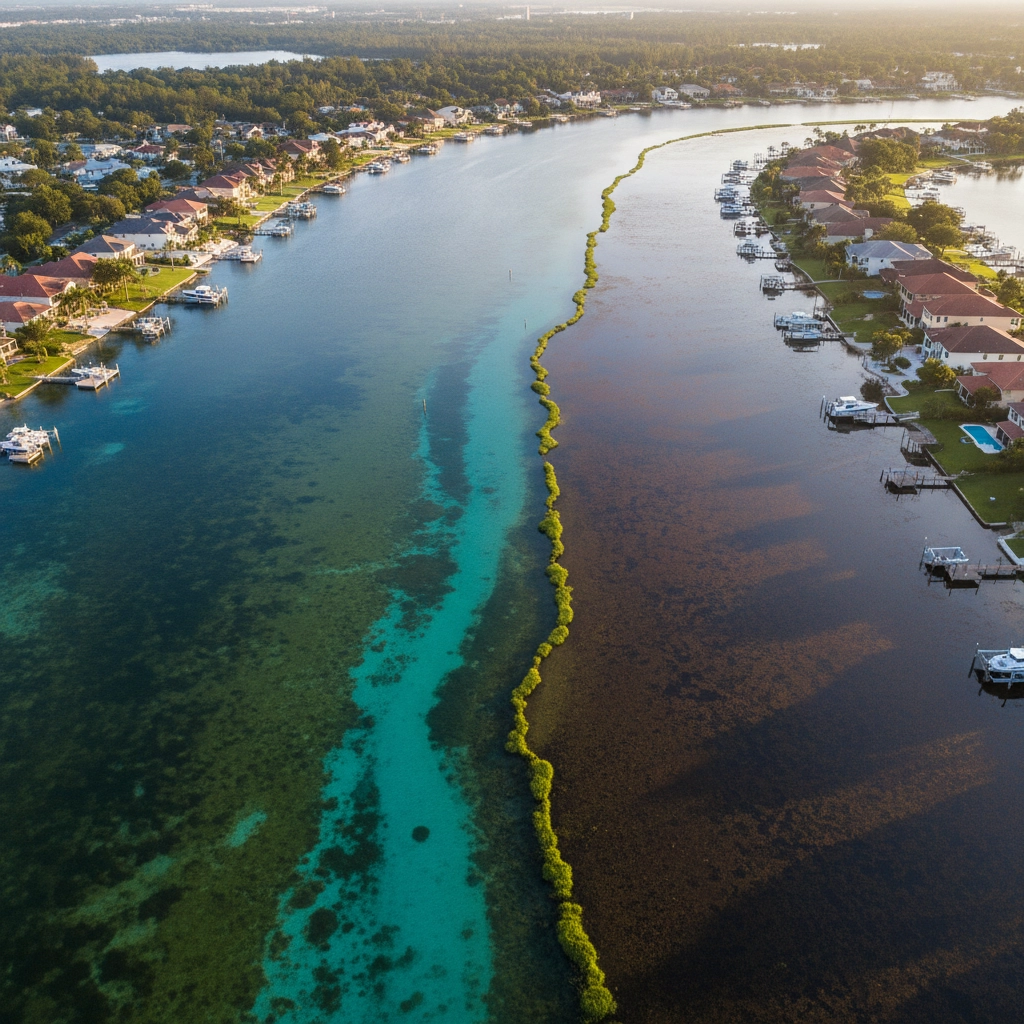
Student-Led Conservation Initiatives Making Measurable Impact
Hands-On Restoration Projects
Students participating in Crystal River conservation programs engage directly in ecosystem restoration through scientifically-designed projects that produce quantifiable results. These initiatives teach environmental science principles while contributing meaningfully to habitat recovery.
Seagrass Restoration Programs
Student teams work alongside marine biologists to replant native eelgrass (Vallisneria americana) in areas previously degraded by invasive algae. Participants learn proper planting techniques, monitoring protocols, and data collection methods while contributing to restoration efforts that have successfully replanted over 112 acres of critical habitat.
Students document planting success rates, measure water quality parameters, and track wildlife usage of restored areas. This real-world research experience demonstrates the scientific method while building practical skills in marine ecology and conservation biology.
Invasive Species Removal
Organized removal efforts allow students to physically extract invasive algae and organic detritus while learning about ecosystem balance and species interactions. Student teams have contributed to the removal of over 700 million pounds of Lyngbya algae from the riverbed, directly witnessing how their efforts improve water clarity and habitat quality.
Water Quality Monitoring and Data Collection
Student scientists conduct regular water quality assessments that contribute to ongoing research and management decisions. Training programs teach proper use of scientific instruments and data analysis techniques while generating valuable information for conservation planning.
Monitoring Parameters Include:
Dissolved oxygen levels and temperature measurements
Nutrient concentration testing for nitrogen and phosphorus
Turbidity and water clarity assessments
pH and salinity measurements
Manatee population counts and behavior observations
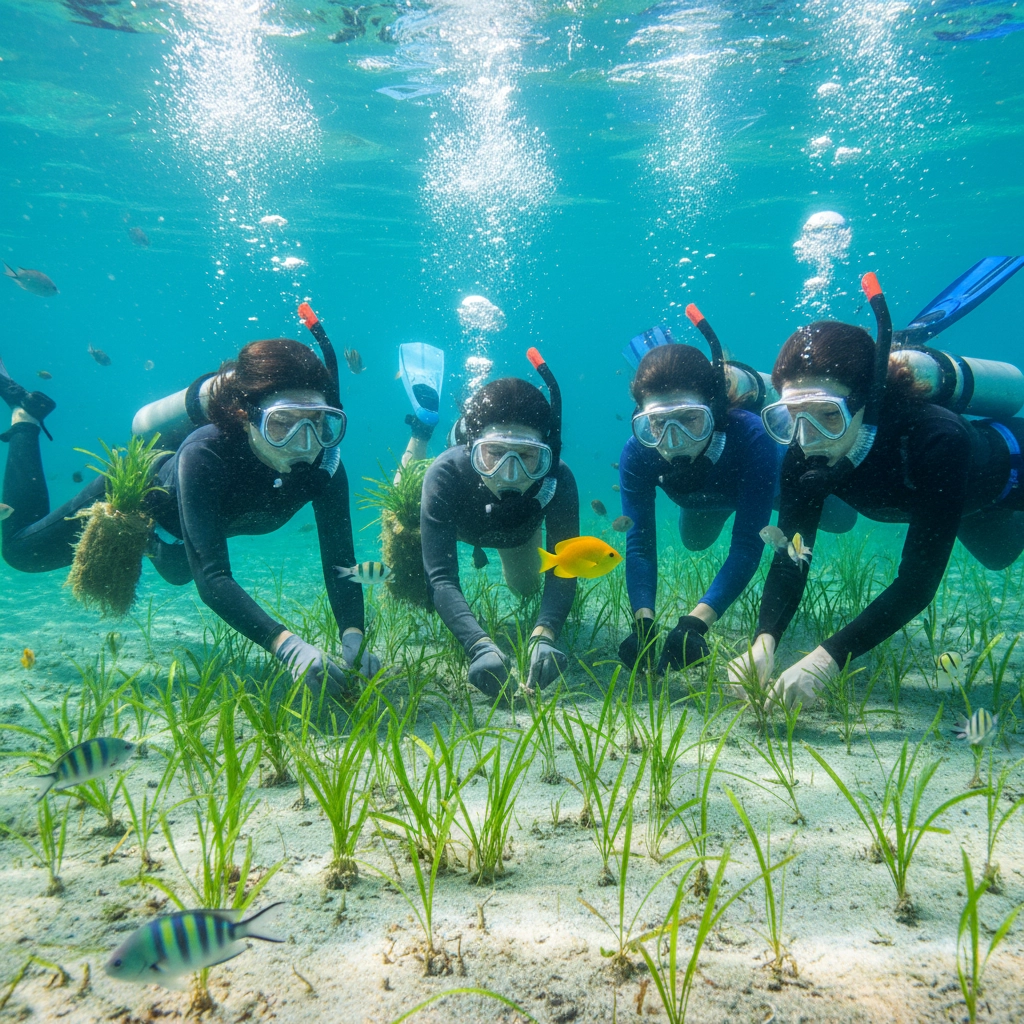
Community Education and Outreach Programs
Students develop communication skills while spreading conservation awareness through presentations, social media campaigns, and community events. These programs teach the importance of public engagement in environmental protection while building leadership capabilities.
Fifth-grade participants create educational materials explaining seagrass ecosystem functions, manatee biology, and conservation challenges. Middle school students design and implement awareness campaigns targeting specific threats like fertilizer runoff and boating impacts.
Scientific Research Opportunities for Student Scientists
Manatee Behavior and Habitat Use Studies
Students contribute to long-term research projects documenting manatee behavior patterns, feeding preferences, and habitat utilization throughout Crystal River. This research provides critical information for management decisions while teaching students observational techniques and data analysis skills.
Research activities include:
Photo-identification of individual manatees using scar patterns
Behavioral observations documenting feeding, resting, and social interactions
Habitat mapping identifying preferred resting and feeding areas
Temperature monitoring in manatee aggregation sites
Spring Flow and Ecosystem Health Assessment
Advanced students participate in hydrological studies measuring spring discharge rates, temperature variations, and seasonal flow patterns. This research demonstrates connections between groundwater systems and marine ecosystem health while teaching principles of aquifer science and water resource management.
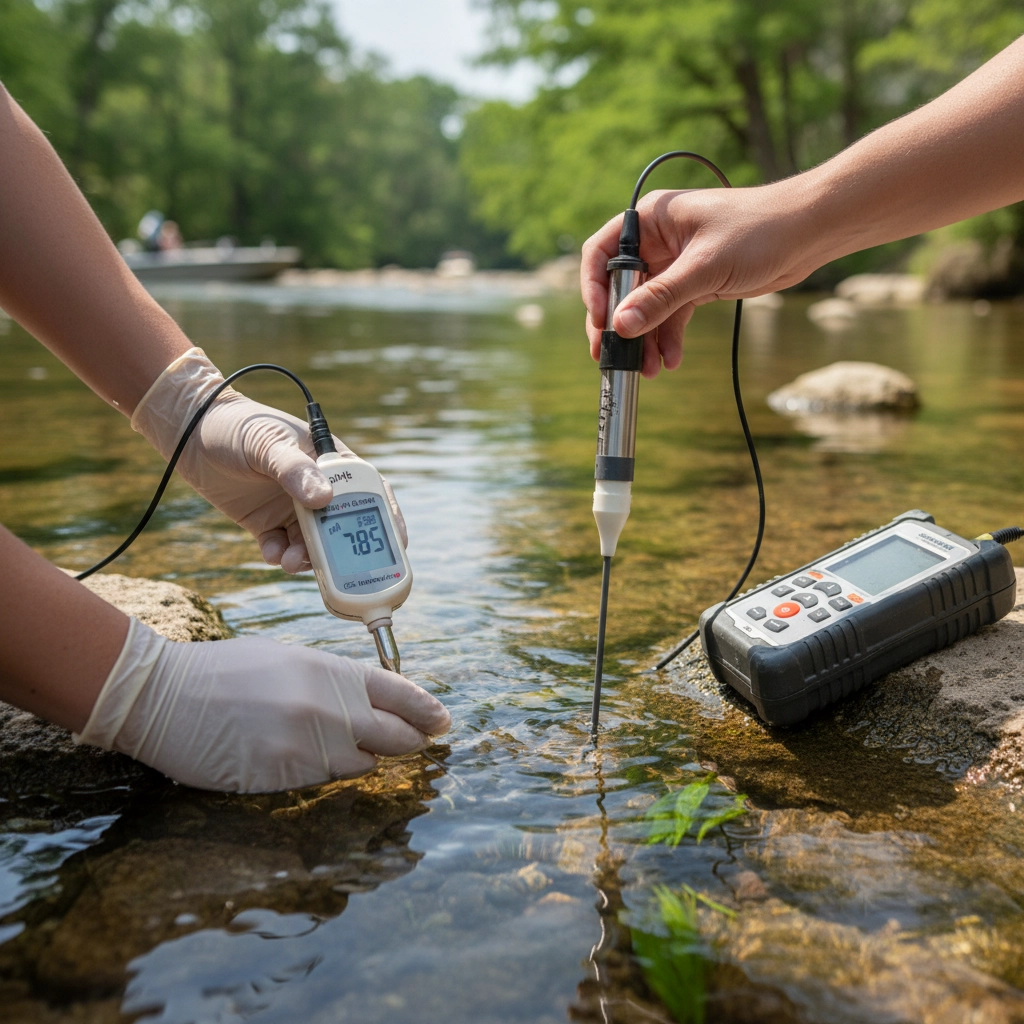
Service Learning Integration and Educational Outcomes
Developing Environmental Stewardship Ethics
Participation in conservation work develops personal connections to environmental protection that extend far beyond classroom learning. Students experience firsthand how individual actions contribute to ecosystem health, fostering lifelong conservation ethics and environmental awareness.
Regular engagement with conservation challenges teaches students to:
Analyze complex environmental problems using scientific thinking
Develop solutions based on evidence and data analysis
Understand connections between human activities and ecosystem health
Communicate effectively about environmental issues
Building Scientific Research Skills
Hands-on conservation projects provide authentic research experiences that prepare students for advanced scientific study and careers in environmental fields. Students learn proper experimental design, data collection techniques, statistical analysis, and scientific communication.
Fostering Community Connections
Student conservation work builds partnerships between educational institutions, local organizations, and government agencies. These connections provide ongoing learning opportunities while demonstrating how collaborative efforts achieve conservation goals more effectively than isolated initiatives.
Measuring Success and Long-Term Impact
Quantifiable Conservation Outcomes
Student involvement in Crystal River conservation has contributed to measurable ecosystem improvements including increased seagrass coverage, improved water clarity, and stabilized manatee population numbers. Regular monitoring demonstrates how sustained effort produces tangible results in ecosystem restoration.
Success indicators include:
Expansion of native seagrass meadows by over 100 acres
Reduction in invasive algae coverage by 85% in treated areas
Improved water clarity allowing sunlight penetration for photosynthesis
Increased fish diversity and abundance in restored habitats
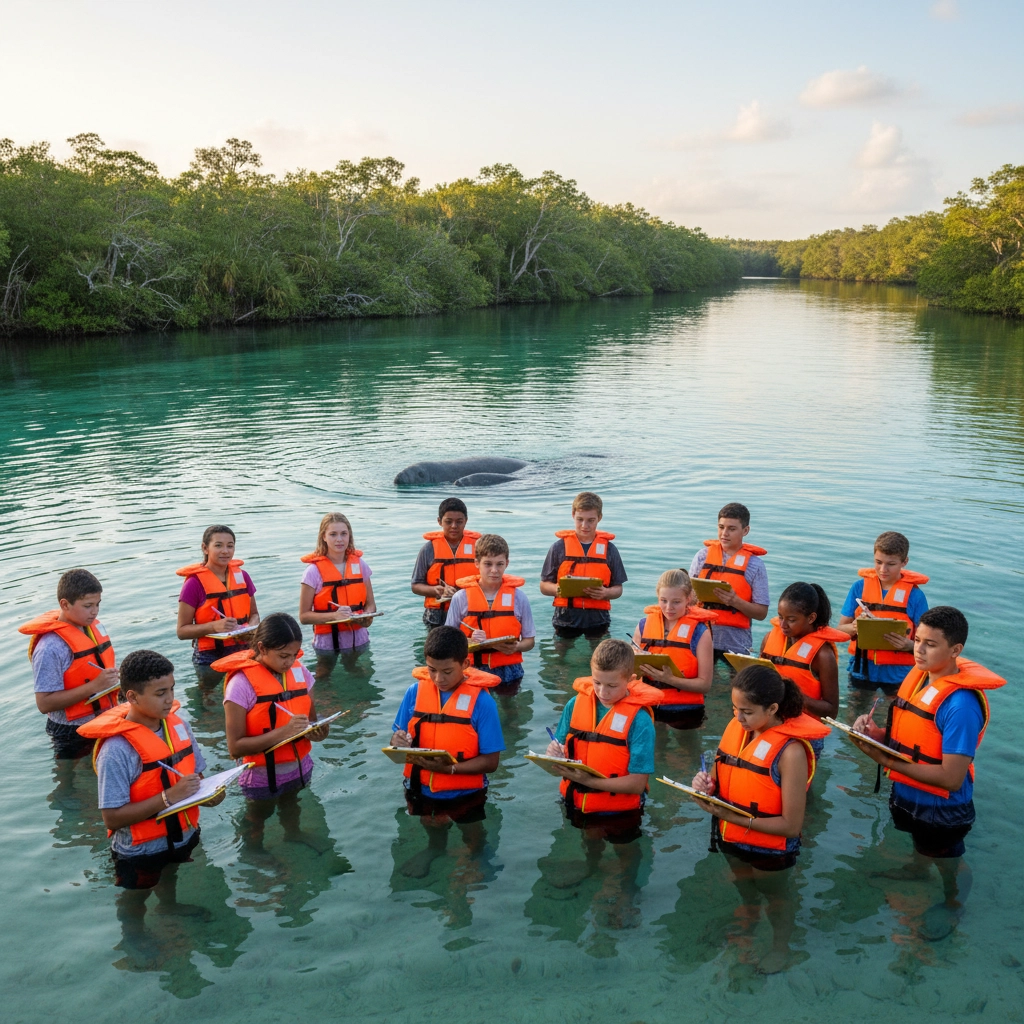
Preparing the Next Generation of Marine Conservationists
Student engagement in Crystal River conservation creates pathways for future environmental careers while building the knowledge and skills necessary to address ongoing conservation challenges. Participants develop technical expertise, leadership abilities, and collaborative skills essential for effective environmental stewardship.
Through direct involvement in restoration work, scientific research, and community education, students gain comprehensive understanding of marine ecosystem conservation while contributing meaningfully to the protection of one of Florida's most important natural treasures. These experiences prepare young scientists to tackle increasingly complex environmental challenges while fostering the passion and commitment necessary for lifelong conservation work.
Ensure that your students understand their potential to create meaningful environmental change through scientific action and community engagement. Encourage participation in hands-on conservation projects that demonstrate how individual effort contributes to ecosystem health and species protection. Emphasize the importance of continued learning and involvement in environmental stewardship as essential preparation for addressing future conservation challenges.



Comments